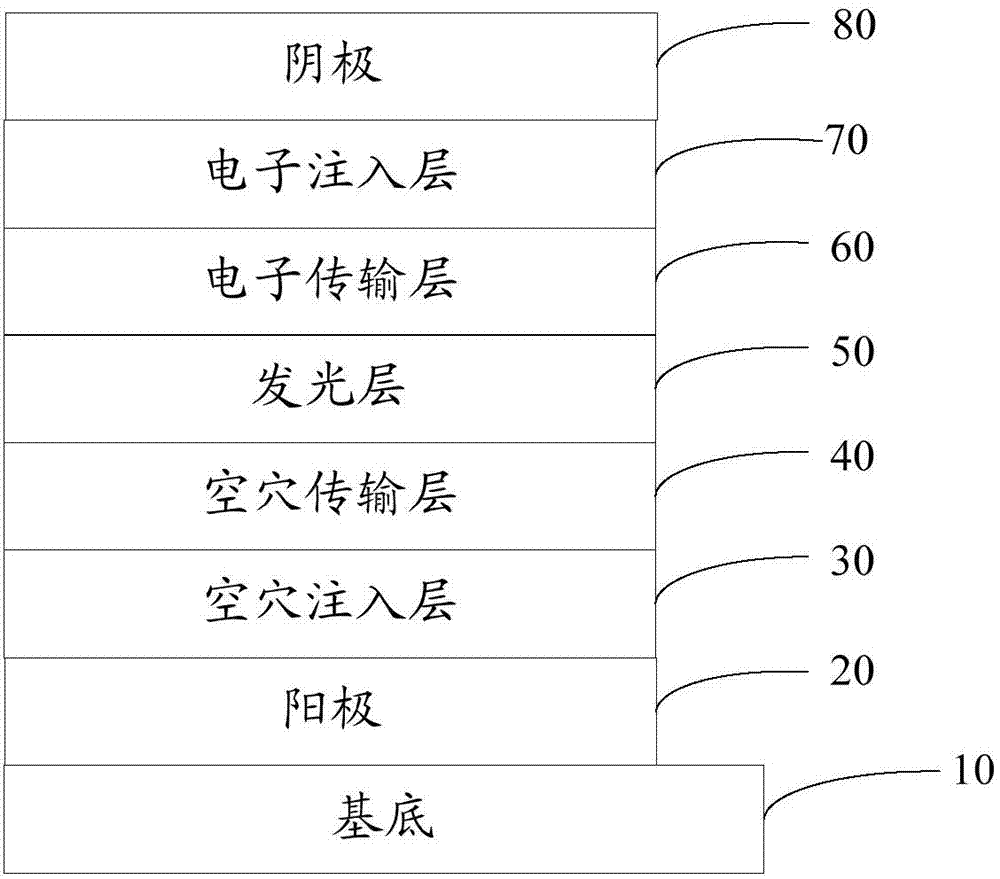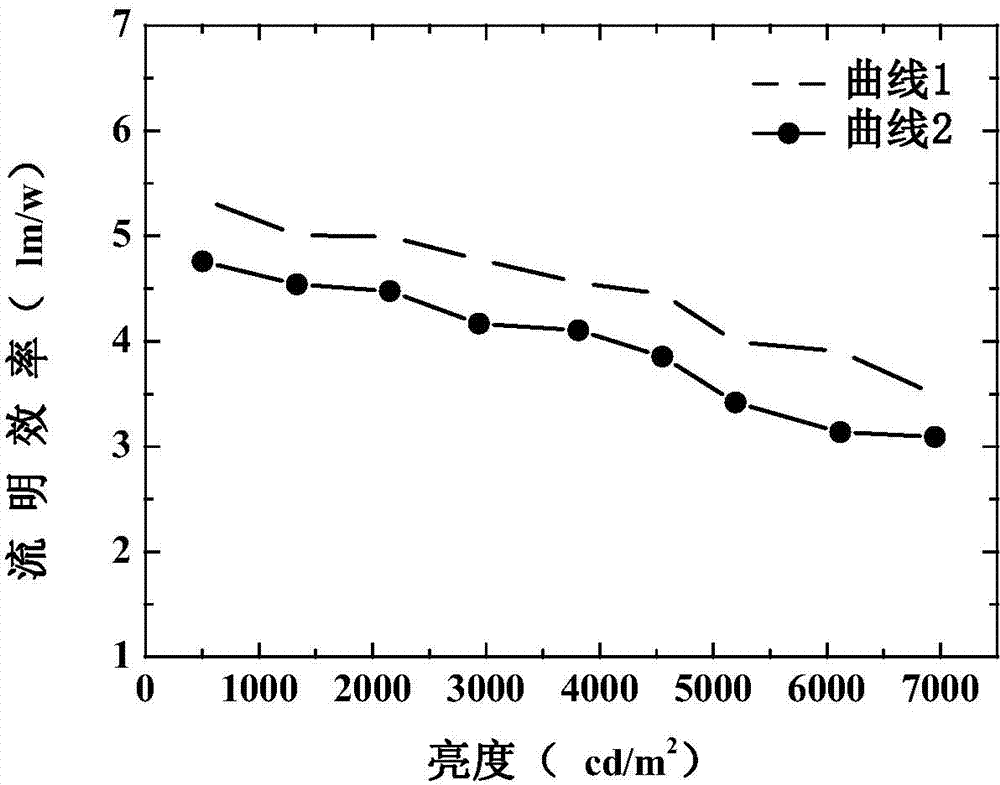Organic electroluminescence device and preparing method thereof
An electroluminescent device and electroluminescent technology, which are applied in the fields of electric solid state devices, semiconductor/solid state device manufacturing, electrical components, etc., can solve the problems of low exciton recombination probability and low luminous efficiency, etc.
- Summary
- Abstract
- Description
- Claims
- Application Information
AI Technical Summary
Problems solved by technology
Method used
Image
Examples
preparation example Construction
[0044] Such as figure 2 The preparation method of the above-mentioned organic electroluminescence device shown, comprises the following steps:
[0045] S10 , performing surface pretreatment on the substrate 10 .
[0046] The substrate 10 is glass. Generally speaking, ordinary glass will do. In special application fields, special glass made by special process can also be selected.
[0047] The surface pretreatment process specifically includes: after the substrate 10 is rinsed with distilled water and ethanol in sequence, it is soaked in isopropanol overnight.
[0048] S20 , preparing the anode 20 on the substrate 10 by magnetron sputtering.
[0049] The anode 20 may be an indium tin oxide film (ITO), an aluminum-doped zinc oxide film (AZO) or an indium-doped zinc oxide film (IZO), and the thickness of the anode 20 is 50 nm to 300 nm. In a preferred embodiment, the anode 20 is an indium tin oxide film (ITO), and the thickness of the anode 20 is 120 nm.
[0050] The accel...
Embodiment 1
[0067] An organic electroluminescent device, including a substrate, an anode, a hole injection layer, a hole transport layer, a light emitting layer, an electron transport layer, an electron injection layer and a cathode stacked in sequence, the specific structure is expressed as: glass / ITO / MoO 3 / NPB / BCzVBi / TPBI / BCP:3HT:F4-TCNQ / Ag. The preparation steps are:
[0068] Provide a commercially available common glass, rinse the glass with distilled water and ethanol in sequence, and soak it in isopropanol overnight.
[0069] The anode was prepared by magnetron sputtering on the surface-treated glass surface. The material of the anode is ITO, and the thickness is 120nm. The acceleration voltage of magnetron sputtering is 700V, the magnetic field is 120G, and the power density is 25W / cm 2 .
[0070] The working pressure is 8×10 -4 Under the condition of Pa, the evaporation rate of organic materials is 0.2nm / s, and the evaporation rate of metals and metal compounds is 2nm / s, and...
Embodiment 2
[0076] An organic electroluminescent device, including a substrate, an anode, a hole injection layer, a hole transport layer, a light emitting layer, an electron transport layer, an electron injection layer and a cathode stacked in sequence, the specific structure is expressed as: glass / IZO / V 2 o 5 / TAPC / AND / TAZ / Bphen:3AT:1T-NATA / Al. The preparation steps are:
[0077] Provide a commercially available common glass, rinse the glass with distilled water and ethanol in sequence, and soak it in isopropanol overnight.
[0078] The anode was prepared by magnetron sputtering on the surface-treated glass surface. The material of the anode is IZO with a thickness of 300nm. The acceleration voltage of magnetron sputtering is 300V, the magnetic field is 50G, and the power density is 40W / cm 2 .
[0079] The working pressure is 2×10 -3 Under the condition of Pa, according to the vapor deposition rate of the organic material is 1nm / s, and the vapor deposition rate of the metal and met...
PUM
 Login to View More
Login to View More Abstract
Description
Claims
Application Information
 Login to View More
Login to View More - R&D
- Intellectual Property
- Life Sciences
- Materials
- Tech Scout
- Unparalleled Data Quality
- Higher Quality Content
- 60% Fewer Hallucinations
Browse by: Latest US Patents, China's latest patents, Technical Efficacy Thesaurus, Application Domain, Technology Topic, Popular Technical Reports.
© 2025 PatSnap. All rights reserved.Legal|Privacy policy|Modern Slavery Act Transparency Statement|Sitemap|About US| Contact US: help@patsnap.com



